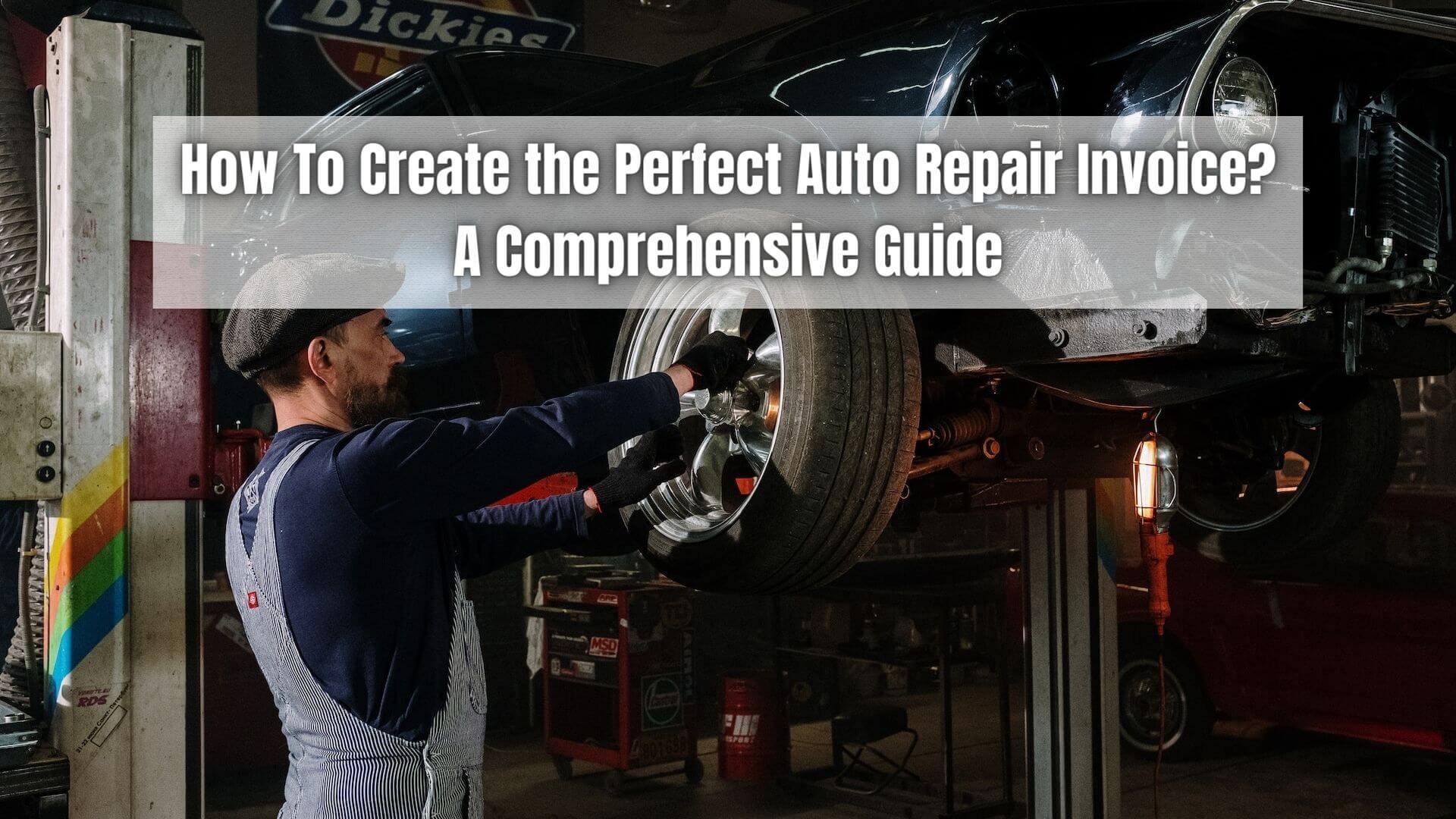Invoicing is critical to running an auto repair shop. It’s the first step in getting paid, so it needs to be done correctly. The good news is that with modern technology, creating and sending out invoices doesn’t have to be complicated or time-consuming.
This guide will provide tips on creating the perfect auto repair invoice for your business. We’ll cover everything from understanding what information should go into an invoice to choosing the right invoicing software for your auto repair shop.
Table of Contents
ToggleWhat is an Auto Repair Invoice?
An auto repair invoice is a document detailing the services provided and the cost for those services. It’s sent to customers after the job order and will prove that the customer needs to pay for the service. An auto repair invoice provides vital information regarding the work performed and will help you keep track of all the services provided to customers. At the same time, it also serves as a payment record for the customer.
Importance of Invoicing in an Auto Repair Business
In the auto repair business, providing quality service and ensuring customer satisfaction is crucial for success. One aspect that is often overlooked but plays a significant role in maintaining a professional image and smooth operations is invoicing. A well-organized invoicing system can make a world of difference in your business’s overall customer experience and financial health. Here are some reasons why invoicing is so essential in the auto repair industry:
Clear Communication
A detailed invoice is a clear communication tool between you and your customers. It outlines all services rendered, parts used, labor costs, and any additional fees or taxes. This transparency helps customers understand exactly what they’re paying for and reduces the likelihood of disputes or misunderstandings.
Professionalism
Providing a well-designed, accurate, and easy-to-understand invoice reflects positively on your auto repair business. It shows that you take your work seriously and care about maintaining a professional image. A clean and organized invoice can also help build customer trust, increasing the chances of repeat business and referrals.
Tracking Expenses and Revenue
Invoicing allows you to keep track of expenses (such as parts and labor) and revenue generated from each job. This information is vital for financial planning, budgeting, and monitoring the overall profitability of your business. Regularly reviewing your invoices can help identify trends or areas where improvements can be made, ensuring your business remains competitive and profitable.
Legal Compliance
Depending on your location, specific laws and regulations regarding invoicing and record-keeping for businesses may exist. Proper invoicing ensures that you comply with these legal requirements, helping you avoid potential fines or penalties. Additionally, having accurate records makes it easier to prepare and file taxes, reducing the risk of errors and audits.
Faster Payments
A well-organized invoicing system can help you get paid faster. Providing your customers with a clear and detailed invoice promptly after completing a job makes it easier for them to understand and settle their bills. This can lead to better cash flow for your business due to quicker payments.
Dispute Resolution
In the event of a disagreement or dispute with a customer, having a comprehensive invoice serves as evidence of the work done and the costs involved. This documentation can be invaluable in resolving any issues that may arise, protecting your business and reputation.
Estimate vs. Invoice in Auto Repair: What’s the Difference?
In the auto repair industry, clear communication with customers is crucial for maintaining a positive reputation and ensuring customer satisfaction. Two essential documents that facilitate this communication are estimates and invoices. While they may seem similar at first glance, they serve different purposes and contain different information. Here’s an overview of the key differences between estimates and invoices in auto repair:
Estimate
An estimate is a preliminary document provided to the customer before any work begins on their vehicle. It roughly approximates the total cost of repairs or services based on the mechanic’s initial assessment. Here are some key features of an estimate:
- Non-binding: An estimate is not a legally binding agreement, and the final cost may vary from the provided estimate. This can occur if additional issues are discovered during the repair process or the scope of work changes.
- Breakdown of Costs: The estimate should include a detailed list of expected labor costs, parts needed, and any additional fees or taxes. This breakdown helps the customer understand the potential expenses involved in the repair process.
- Validity Period: Estimates usually have a specified validity period, after which the quoted prices may no longer be valid. This encourages customers to make decisions promptly and helps businesses manage fluctuating parts and labor costs.
- Approval: The customer should review and approve the estimate before any work begins. This ensures that both parties clearly understand the expected costs and scope of work.
Invoice
An invoice is a document provided to the customer after completing the work. It serves as a formal request for payment and includes a detailed account of the services rendered, parts used, and the final cost. Here are some notable features an invoice should have:
- Legally Binding: An invoice is a legally binding document, unlike an estimate. Once the customer receives the invoice, they are obligated to pay the amount stated within the agreed-upon payment terms.
- Itemized List of Charges: The invoice should include a comprehensive list of all services performed, parts used, labor costs, and additional fees or taxes. This transparency helps customers understand exactly what they’re paying for and reduces the likelihood of disputes or misunderstandings.
- Payment Terms: Invoices typically include payment terms, such as the due date and any applicable late fees or penalties. These terms help ensure timely payments and provide a clear understanding of the customer’s financial obligations.
- Record-keeping: Invoices are essential for the auto repair business and the customer. They help with financial tracking, tax preparation, and legal compliance.
Estimates and invoices play distinct roles in the auto repair process. While an estimate provides a preliminary assessment of the expected costs and scope of work, an invoice is a final, legally binding document detailing the services rendered and the associated costs. Both documents are crucial for maintaining clear communication and ensuring customer satisfaction in the auto repair industry.
Try ReliaBills for Auto Repair Invoicing
While traditional manual invoicing is still an option, many auto repair shops are turning to specialized software like ReliaBills to streamline their invoicing process. ReliaBills can streamline your entire payment processing system, from invoicing to payment collection. Plus, you can customize invoices to include your business information and logo, giving customers a professional impression of your work.
ReliaBills is a cloud-based invoicing and billing software designed to automate payment processes, reduce administrative overhead, and streamline payment processing duties. ReliaBills’ payment processing features include automated recurring billing, payment tracking, payment reminders, online payment processing, and much more!
It also provides valuable tools that help manage customer information, monitor payment records, and create proper billing and collection reports. As a result, invoice and billing management are simple and convenient. You also get access to active customer support, ready to assist you whenever you need help.
Get started with ReliaBills for free today! And if you want more features, you can upgrade your account to ReliaBills PLUS for only $24.95 monthly! Subscribing to ReliaBills PLUS will give you access to advanced features such as automatic payment recovery, SMS notifications, custom invoice creation, advanced reporting, and more!
With ReliaBills, you have an all-in-one solution to your invoicing and payment processing needs. Our convenient solutions will enable you to focus more on running and growing your business. Get started today!
How to Create a New Auto Repair Invoice Using ReliaBills
Creating an invoice using ReliaBills involves the following steps:
Step 1: Login to ReliaBills
- Access your ReliaBills Account using your login credentials. If you don’t have an account, sign up here.
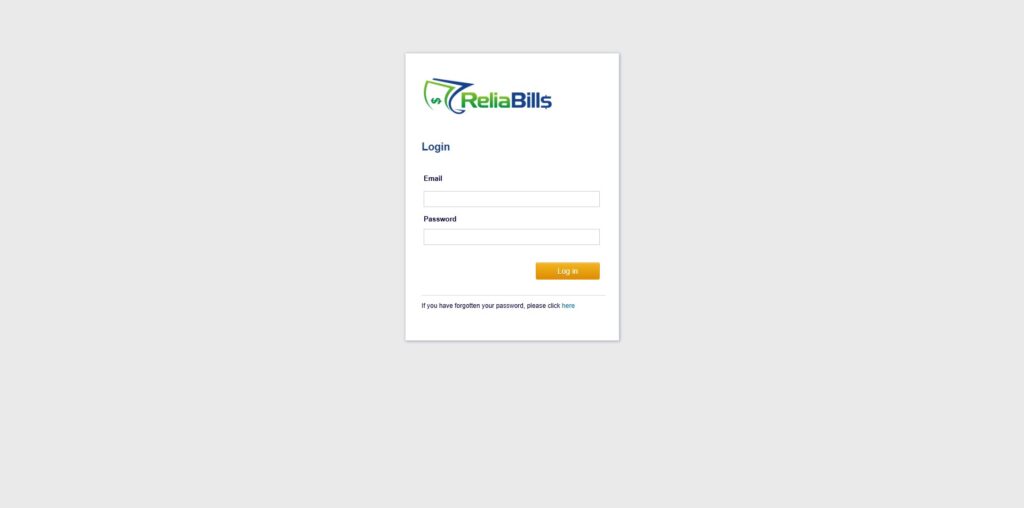
Step 2: Click on Invoices
- Navigate to the Invoices Dropdown and click on Invoices.
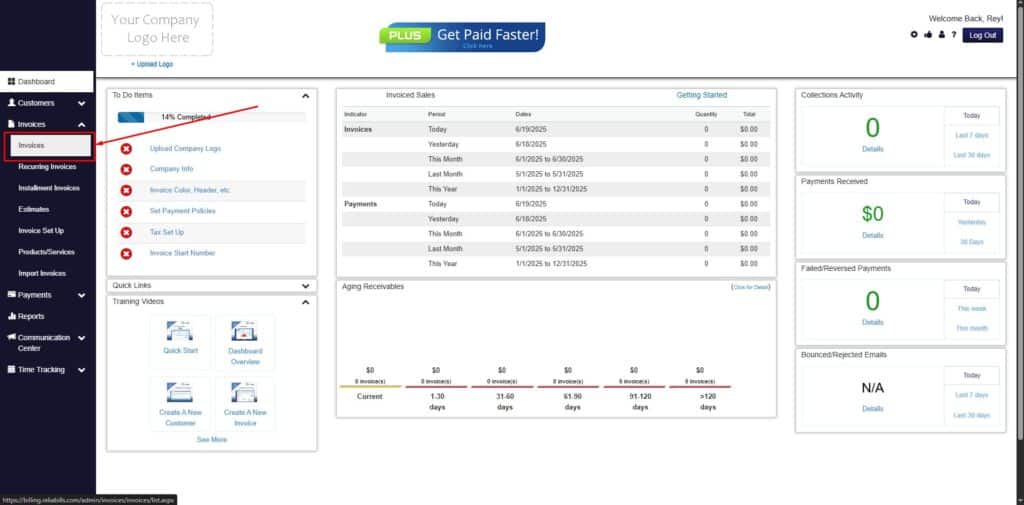
Step 3: Click ‘Create New Invoice’
- Click ‘Create New Invoice’ to proceed.
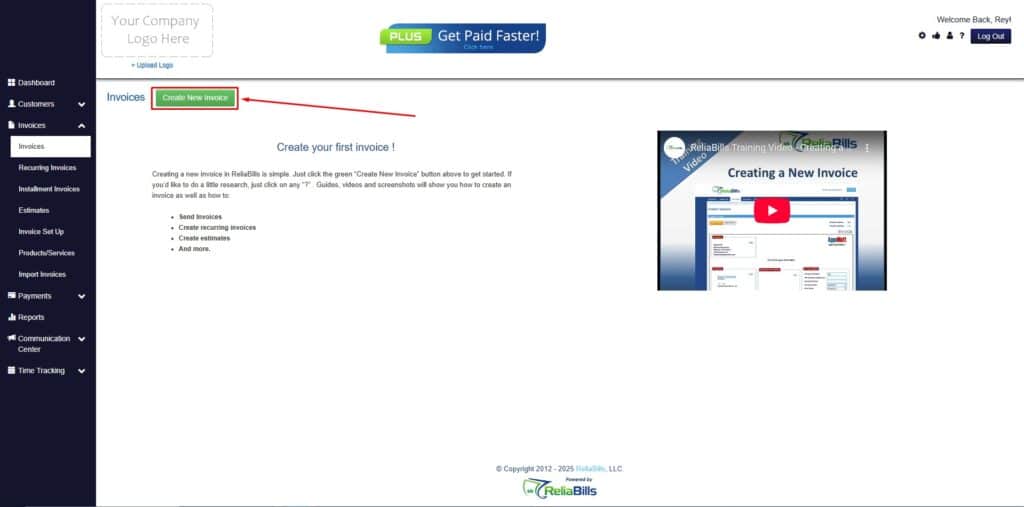
Step 4: Go to the Customers Tab
- If you have already created a customer, search for them in the Customers tab and make sure their status is “Active”.
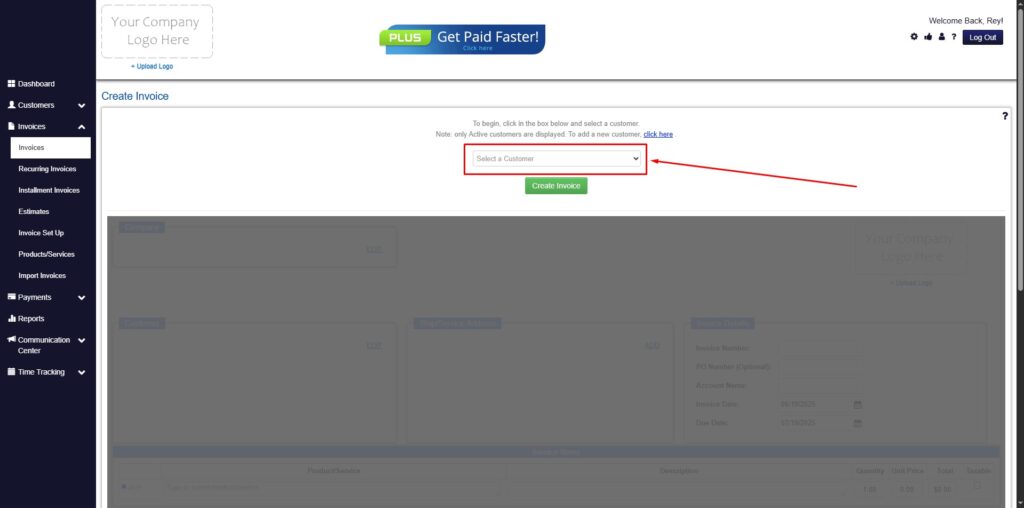
Step 5: Create Customer
- If you haven’t created any customers yet, click the ‘Click here’ to create a new customer.
- Provide the First Name, Last Name, and Email to proceed.
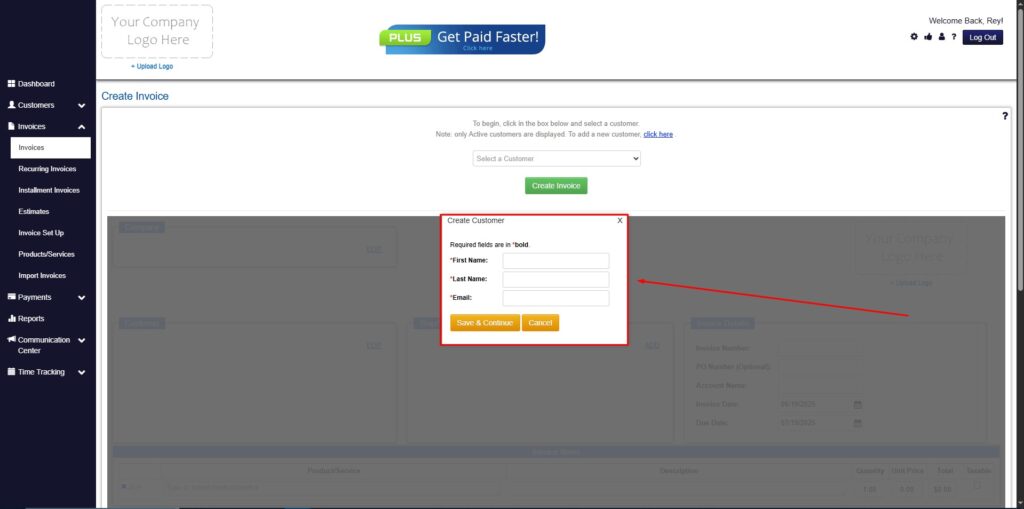
Step 6: Fill in the Create Invoice Form
- Fill in all the necessary fields.
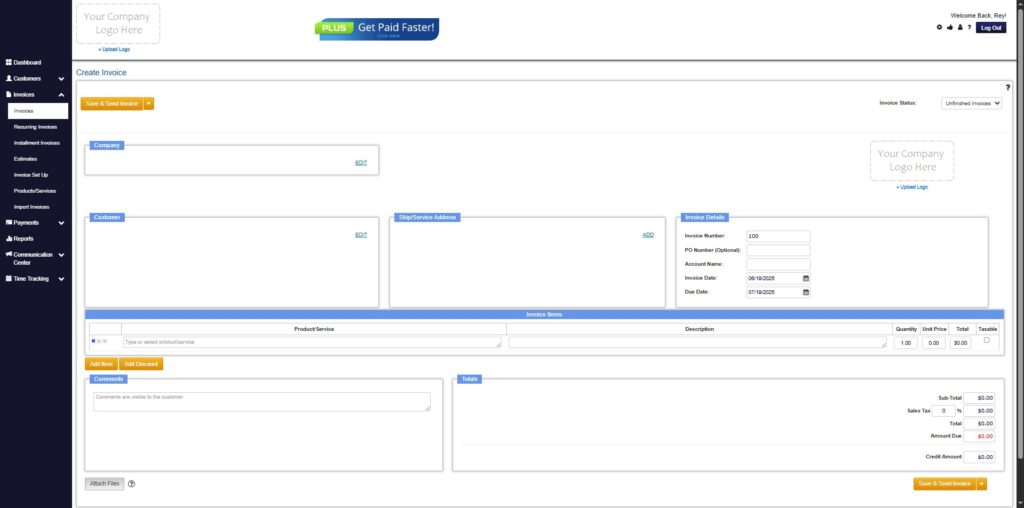
Step 7: Save Invoice
- After filling out the form, click ‘Save & Send Invoice‘ to continue.
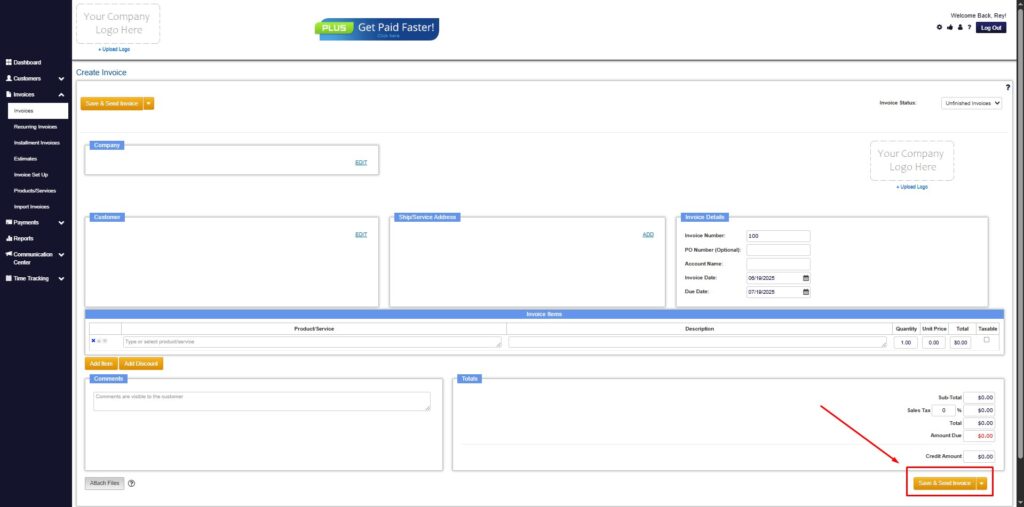
Step 8: Invoice Created
Your Invoice has been created.
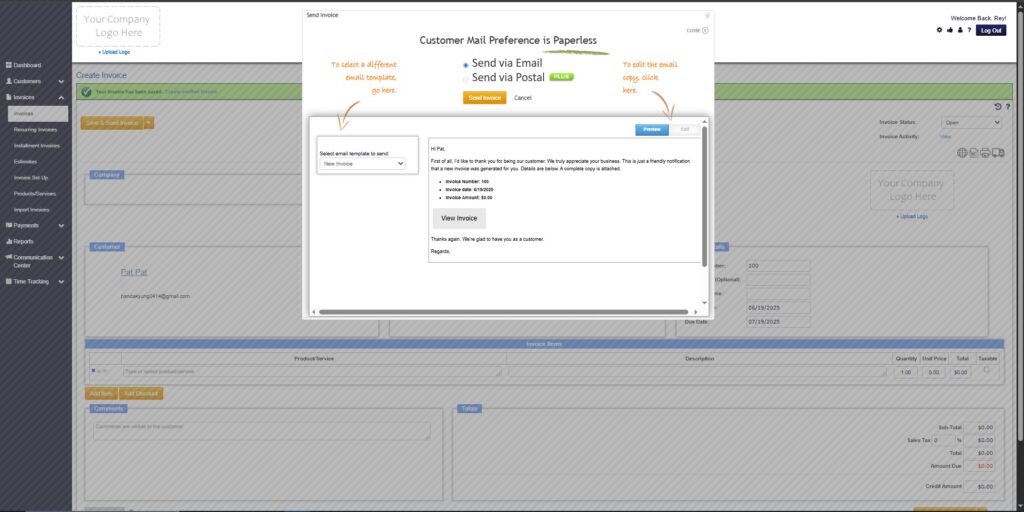
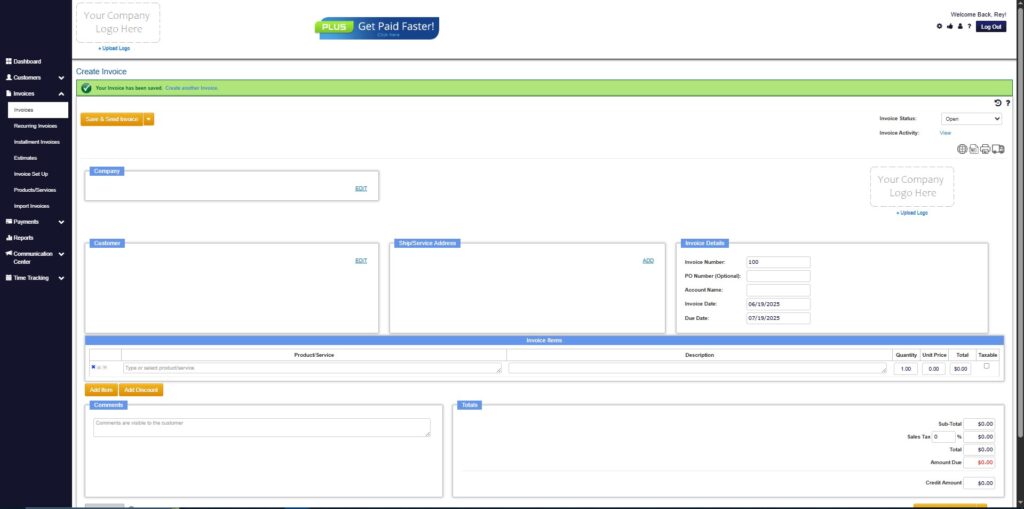
Wrapping Up
Invoicing is a core part of any auto repair business. With the right tools, you can create professional-looking invoices that promote clear communication and timely payments. In addition, using specialized invoicing software like ReliaBills can help streamline your business and reduce administrative overhead. Get started creating the perfect auto repair invoice today!

